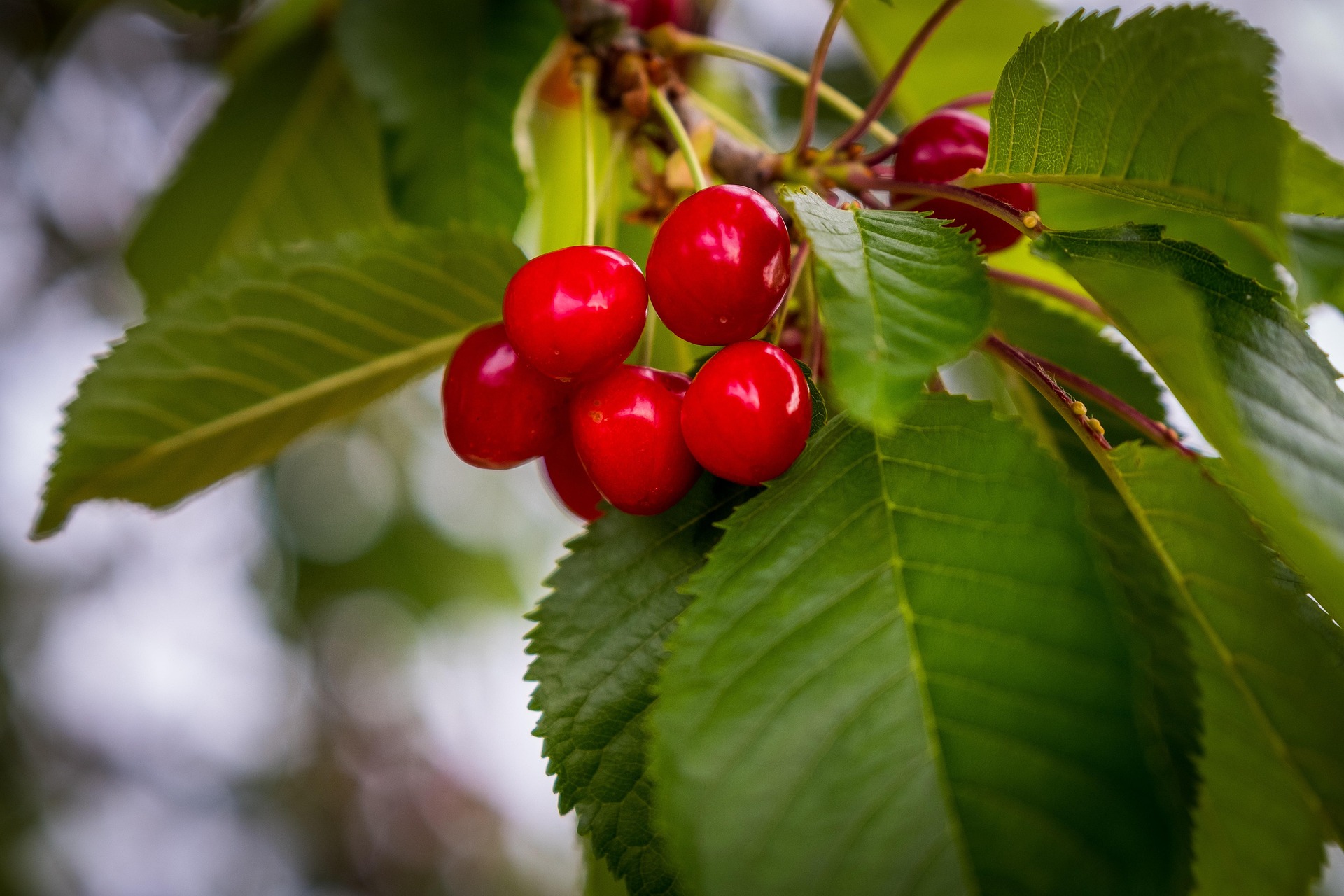Cherry, wild (Prunus avium)

Beautiful blossom and a bounty of bright red fruits. Wild cherry , one of the prettiest native trees, is relished by gardeners and wildlife.
Common names:
Wild cherry, sweet cherry, gean
Scientific name:
Prunus avium
Family:
Rosaceae
Origin:
Native
Mature trees can grow to 30m and live for up to 60 years. The shiny bark is a deep reddish-brown with prominent cream-coloured horizontal lines called lenticels. The second part of its botanical name – avium – refers to birds which play a role in the tree’s propagation by eating the cherries and dispersing the seed. In Scotland, cherry is sometimes referred to as ‘gean’.
What does wild cherry look like?
Leaves:
Oval, green and toothed with pointed tips, measuring 6–15cm with two red glands on the stalk at the leaf base. They fade to orange and deep crimson in autumn.
Flowers:
Cherry trees are hermaphrodite, meaning the male and female reproductive parts are found in the same flower. Flowers, measuring 8–15mm across appear in April and are white and cup-shaped, with five petals. They hang in clusters of two to six.
Fruits:
After pollination by insects, the flowers develop into globular, hairless, deep-red cherries.
Where to find wild cherry:
Wild cherry is native throughout the UK and Europe, except the far north. It grows best in full sunlight and fertile soil.
Value to wildlife:
The spring flowers provide an early source of nectar and pollen for bees; while the cherries are eaten by birds, including the blackbird and song thrush; as well as mammals, such as the badger, wood mouse, yellow-necked mouse and dormouse. The foliage is the main food plant for caterpillars of many species of moth, including the cherry fruit and cherry bark moths, the orchard ermine, brimstone and short-cloaked moth.
Mythology and symbolism:
In Highland folklore, wild cherry had mysterious qualities, and to encounter one was considered auspicious and fateful.
Uses of wild cherry:
Wild cherry has many cultivars and is a popular ornamental tree in gardens. Traditionally, cherries were planted for their fruit and also their wood which was used for making cask hoops and vine poles. The sticky resin was thought to promote a good complexion and eyesight, and help to cure coughs.
These days, cherry wood is used to make decorative veneers and furniture. The wood is hard, strong and honey-coloured, and can be polished to a good, shiny brown. The wood burns well and produces a sweetly scented smoke, similar to the scent of its flowers.